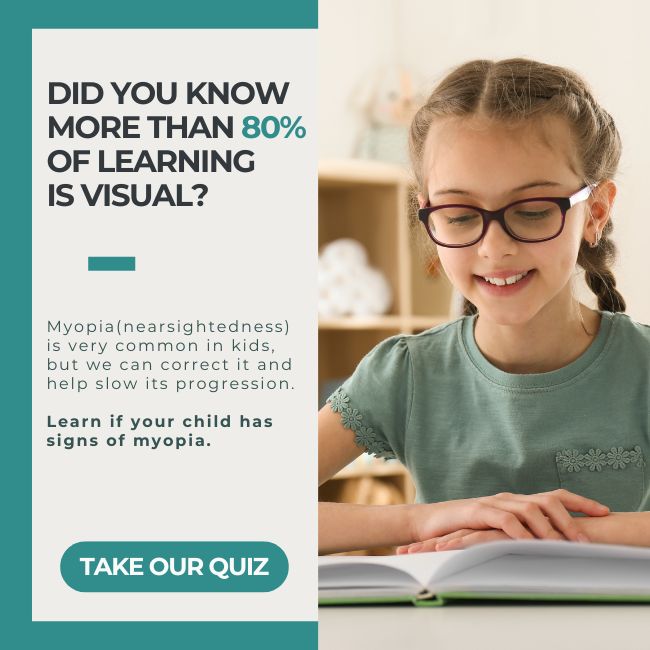What is Dry Eye Syndrome?
Your tears are designed to keep your eyes moist, healthy, and comfortable. They also help provide clear vision. Dry eyes occur when your eye does not provide enough tears or if the tears evaporate too quickly from the surface of your eye. This can cause your eyes to become uncomfortable and prevent you from doing some everyday tasks like working on a computer.
What are the typical symptoms of Dry eye syndrome?
- Stinging or burning of the eye
- A sandy or gritty sensation as if something is in the eye
- Excess tearing
- Pain and redness of the eye
- Itchy eyes
- Blurred vision
- Uncomfortable contact lenses
- Decreased tolerance for reading, working on the computer, or any activity that requires long periods of visual attention
What causes Dry Eye Syndrome?
- Aging
- Environmental causes such as high altitude, smoking, or air conditioned environments
- Medications such as high blood pressure medications, anti-depressants, anti-histamines, and birth control pills
- Medical conditions such as diabetes, Sjogren’s syndrome, Parkinson’s disease, thyroid disease, and auto-immune diseases
- Reduced blinking usually due to being on a computer or reading for long periods of time
- Hormonal changes such as menopause
- Contact lens wear
- Eye surgeries such as LASIK, PRK, or cataract surgery
- Diet
How does your Eye Doctor / Optometrist test for Dry Eye Syndrome?
At Insight Eyecare, our Optometrists use three different types of tests to determine if you suffer from Dry Eye Syndrome. They are:
- Tear breakup time (TBUT) – this helps us determine how stable your tear film is. Patients that suffer from Dry Eye Syndrome usually have an unstable tear film and their tear film disappears after a short period of time and causes their eyes to become uncomfortable. TBUT is performed by instilling a dye called fluorescein into your eye. You are then directed to keep your eyes open as long as possible and the doctor measures how long it takes for the tear film to break up. Anything less than 10 seconds can be associated with Dry Eye Syndrome.
- Fluoroscein instillation – this helps determine if there is any damage done to the ocular surface such as the cornea or conjunctiva.
- Meibomian Gland expression – the Optometrist can push on the lids to see if there is any blockage in any of the oil glands along the eyelids. If there is a blockage, this can cause tears to evaporate from your eyes quicker than normal
How is Dry Eye Syndrome treated?
While there is no cure for Dry Eye Syndrome, symptoms can be managed with:
- Diet – a diet rich in omega-3 has shown to decrease the risk of Dry Eye Syndrome. You can get omega-3 from foods such as fish, fish oils, canola oil, flaxseed, and walnuts
- Lifestyle changes – such as taking breaks when on computer, smoking cessation, and drinking more water
- Contact Lenses – if contact lenses are the source of your Dry Eye Syndrome, your Optometrist can recommend a lens that is better suited for your eyes
- Artificial Tears – there are many different types of over-the-counter lubricating drops that can help alleviate symptoms of Dry Eye Syndrome. Your Optometrist can recommend a lubricating drop that is best suited for your eyes.
- Prescription Medications – this is usually used in moderate to severe case of Dry Eye Syndrome. Your Optometrist at an eye clinic can prescribe a topical steroid drop that can reduce inflammation or a topical antibiotic drop to eliminate any type of infection that may be causing your dry eyes such as blepharitis. There is also a topical medication called Restasis, which increases your tear production that your Optometrist can prescribe.







